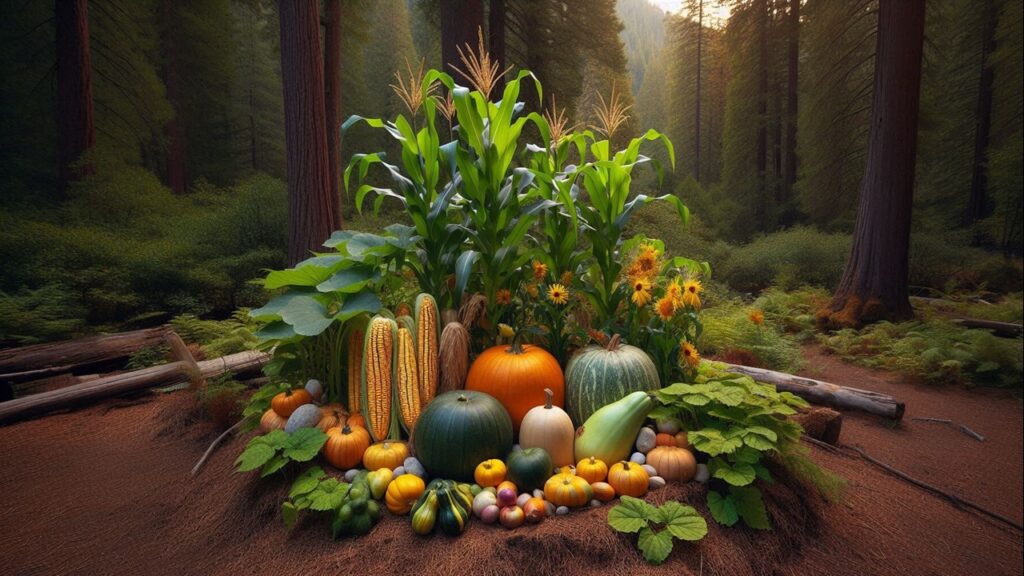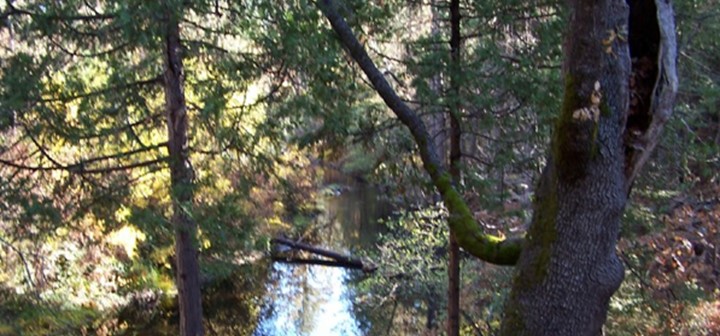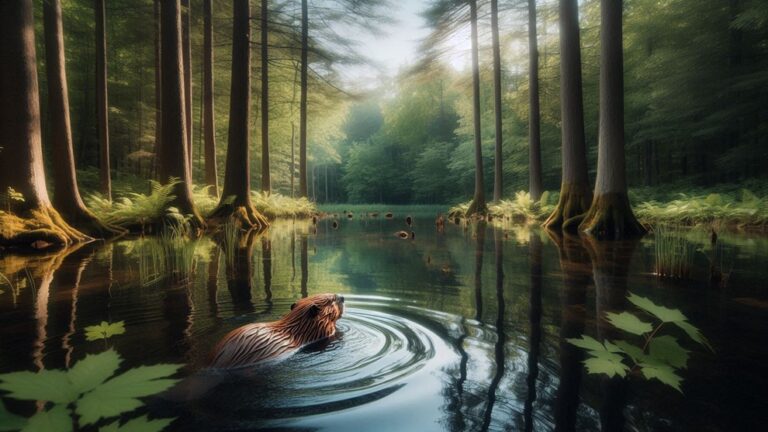Best of Both Worlds

Farming in the forest, agroforestry, can take many forms, from the local friend who’s growing truffles on his wooded suburban acreage to friends in the mountains who share food with neighbors and sell in local popup markets. The existing forest environment already provides years of mulch, compost, and topsoil with the added benefit of absorption and erosion control. The soil is ready to support new life, unlike a patch of bare, baked dirt I’m currently trying to revive for a friend as a pollinator garden. Without synthetic chemicals, you might be able to attract a local beekeeper and share in those farm to table and market benefits.
Thoughtful research will help identify the crops most compatible with your environment. The Indigenous Three Sisters is a suggestion with a successful history of hundreds (if not thousands) of years. My image shows pumpkins which would have been my preferred squash until I did some research. My choice for beans wasn’t supported either. I would have gone for Garbanzo beans, but pole beans are the preferred type. Research is a wonderful thing. This website provides detailed instructions on planting the Three Sisters with recommendations for the best varieties to plant. https://www.almanac.com/content/three-sisters-corn-bean-and-squash
If you add chickens and sheep, you add natural fertilizer and pest control. You also add potential revenue. They may impose a small tax in the form of adding some of your crops to their grazing but if you’re thoughtful about the number of grazers you recruit, it won’t be significant. There are health benefits to eating eggs that are hormone and pesticide free. What animals will be most compatible with your piece of land and your lifestyle? Research is a wonderful thing. This website provides detailed information on benefits and management of livestock (I’d steer away from the Ostriches). https://www.fs.usda.gov/nac/practices/silvopasture.php






